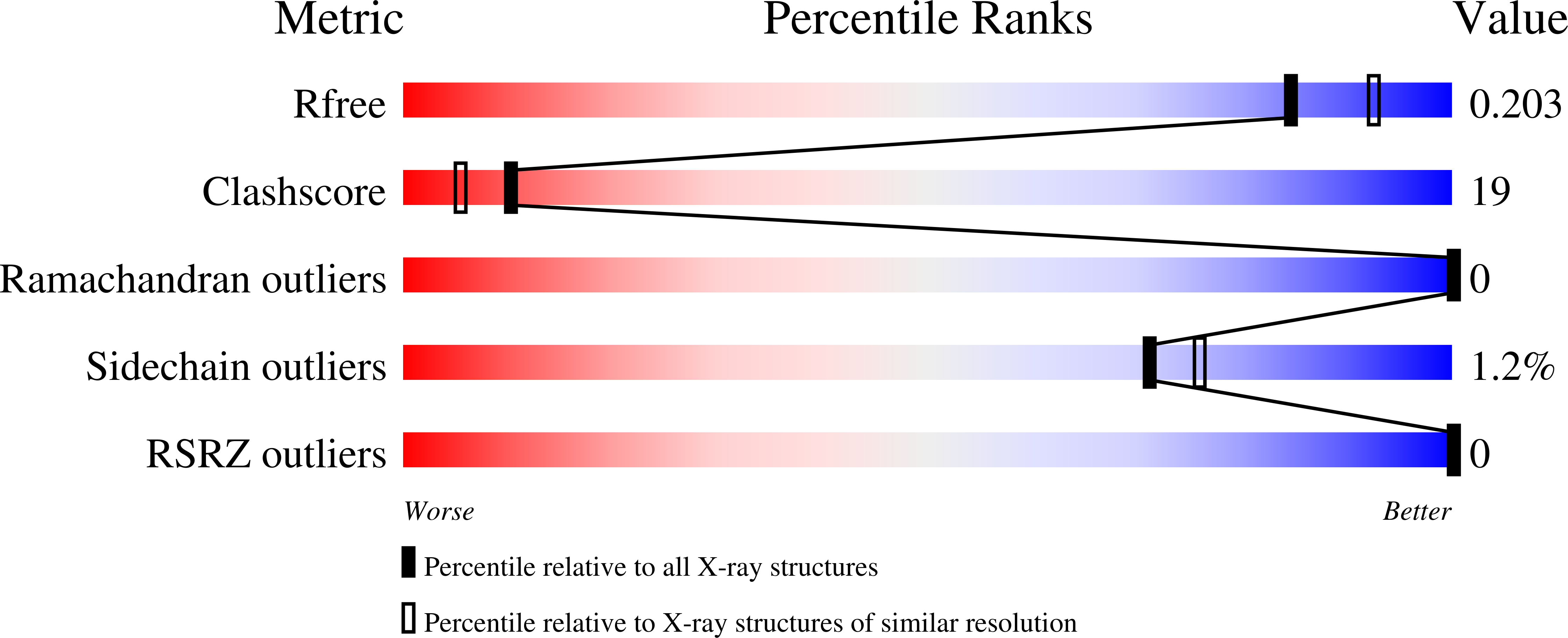Binding site differences revealed by crystal structures of Plasmodium falciparum and bovine acyl-CoA binding protein.
van Aalten, D.M., Milne, K.G., Zou, J.Y., Kleywegt, G.J., Bergfors, T., Ferguson, M.A., Knudsen, J., Jones, T.A.(2001) J Mol Biology 309: 181-192
- PubMed: 11491287
- DOI: https://doi.org/10.1006/jmbi.2001.4749
- Primary Citation of Related Structures:
1HB6, 1HB8, 1HBK - PubMed Abstract:
Acyl-CoA binding protein (ACBP) maintains a pool of fatty acyl-CoA molecules in the cell and plays a role in fatty acid metabolism. The biochemical properties of Plasmodium falciparum ACBP are described together with the 2.0 A resolution crystal structures of a P. falciparum ACBP-acyl-CoA complex and of bovine ACBP in two crystal forms. Overall, the bovine ACBP crystal structures are similar to the NMR structures published previously; however, the bovine and parasite ACBP structures are less similar. The parasite ACBP is shown to have a different ligand-binding pocket, leading to an acyl-CoA binding specificity different from that of bovine ACBP. Several non-conservative differences in residues that interact with the ligand were identified between the mammalian and parasite ACBPs. These, together with measured binding-specificity differences, suggest that there is a potential for the design of molecules that might selectively block the acyl-CoA binding site.
Organizational Affiliation:
Wellcome Trust Biocentre, Department of Biochemistry University of Dundee, Scotland. dava@davapc1.bioch.dundee.ac.uk





















